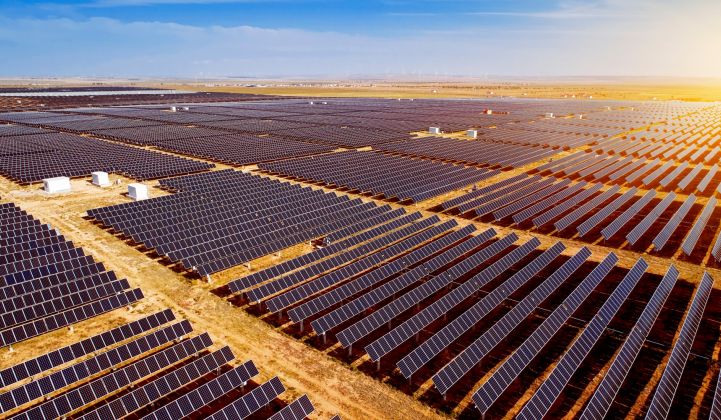More than 55 percent of annual energy storage deployments are expected to be paired with solar by 2023. As the market expands and evolves, system architecture will become an important consideration when developing solar-plus-storage projects.
DC-coupled solar-plus-storage is becoming increasingly common for front-of-the-meter (FTM) applications and is likely to become dominant in the residential market, according to a new report from Wood Mackenzie Power & Renewables. Further, while eligibility for the federal Investment Tax Credit is one factor in the growing share of DC-coupled FTM systems, FTM DC coupling is expected to rise even beyond the ITC stepdown in 2021.
The rise is also due to a new variation on DC-coupled system architecture that is making DC coupling attractive for FTM applications for the first time. Typically, behind-the-meter (BTM) DC-coupled systems use a single multi-port hybrid inverter tied to both batteries and the solar asset. While these inverters work well for the BTM market, they aren’t suited for FTM projects.
The new variation of DC architecture emerging for FTM projects involves a separate DC-DC converter tied to batteries. These new DC-coupled FTM systems typically have lower interconnection costs than AC-coupled systems, as they rely on only one single point of interconnection. Interconnection costs can influence capex for a project developer significantly. (Depending on the size of the system, interconnection costs can make up anywhere from 20 to 35 percent of the balance-of-systems cost stack.)
This single point of interconnection in a DC-coupled system also makes it economically viable to oversize the PV system and store excess generation in batteries, thus supporting cost-effective time-shifting of excess solar.
DC-Coupled Solar-Plus-Storage System Design Increasingly Used for FTM Applications
Given the elimination of AC collection systems, lower balance-of-systems requirements and ease of interconnection, DC-coupled installations today are 3 percent to 10 percent cheaper than AC-coupled systems, depending upon the size of the solar and storage arrays and the discharge duration of the batteries.
DC systems begin to lose their cost advantage, however, as system sizes become larger. As the size of solar and storage increases, economies of scale realized via power conversion and other hardware components don’t translate to overall system capex, as PV modules and batteries start to make up more of the cost stack.
DC-coupled systems easily qualify for the federal Investment Tax Credit, which is set to decline to 10 percent at the end of 2021 for FTM projects. However, while the ease of claiming the ITC may seem at first glance to be a main driver behind the rise of DC-coupled systems in the field today, DC coupling in the FTM market will continue to grow past 2021, according to the report.
As the cost of DC-DC converters continues to fall through 2023, and as hardware coordination issues are resolved and favorable policies are introduced, DC coupling in the FTM market will grow for specific use-case applications.
Because DC systems today don’t allow batteries to charge from the grid, AC-coupled systems will be the default choice of architecture in systems where batteries are installed primarily for grid-support applications.
The commercial and industrial BTM market is the only sector where DC coupling is not on the rise. This sector continues to default to AC-coupled systems and will continue to do so in the near term, according to Wood Mackenzie. While the ease of installation and lower balance-of-systems requirement makes DC-coupled architecture popular for the residential solar-plus-storage market, current issues with multi-port hybrid inverters, such as the single point of failure, fixed input voltages and loss of flexibility, make it less attractive for the BTM non-residential market.
AC-coupled systems are also better suited than DC to accommodate future solar or battery upgrades and for applications like microgrids that demand reliability and flexibility.
Read the Wood Mackenzie report, Solar-Plus-Storage System Architectures: Design, Pricing and Economics in the U.S., here.





